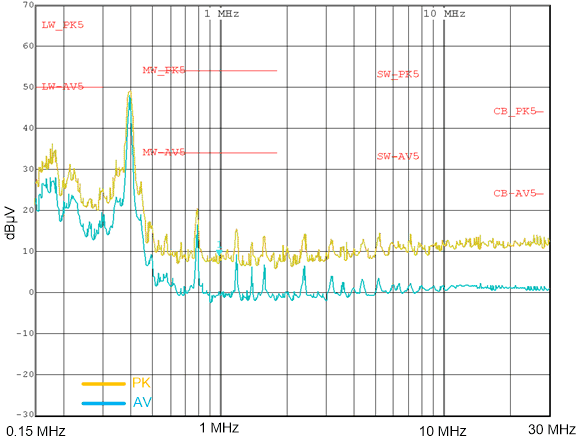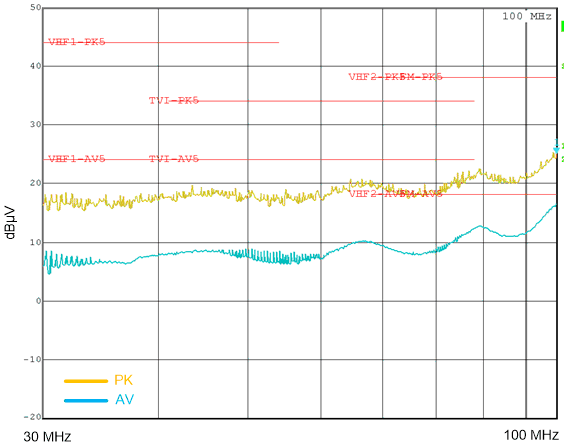SNVSCO0 January 2024 LM63635C-Q1
PRODUCTION DATA
- 1
- 1 Features
- 2 Applications
- 3 Description
- 4 Device Comparison Table
- 5 Pin Configuration and Functions
- 6 Specifications
- 7 Detailed Description
- 8 Application and Implementation
- 9 Device and Documentation Support
- 10Revision History
- 11Mechanical, Packaging, and Orderable Information
Package Options
Mechanical Data (Package|Pins)
- DRR|12
Thermal pad, mechanical data (Package|Pins)
- DRR|12
Orderable Information
8.2.4 EMI Performance Curves
EMI results critically depend on PCB layout and test setup. The results given here are typical and given for information purposes only. Figure 8-18 shows the used EMI filter. The limit lines shown refer to CISPR25 class 5.

| VOUT = 5V | ƒSW = 400kHz |
| Dither | IOUT = 3.25 A |

| VOUT = 5V | ƒSW = 400kHz |
| Dither | IOUT = 3.25A |

A. Input filter used only for EMI
measurements shown in Section 8.2.4.
Figure 8-18 Typical Input EMI Filter